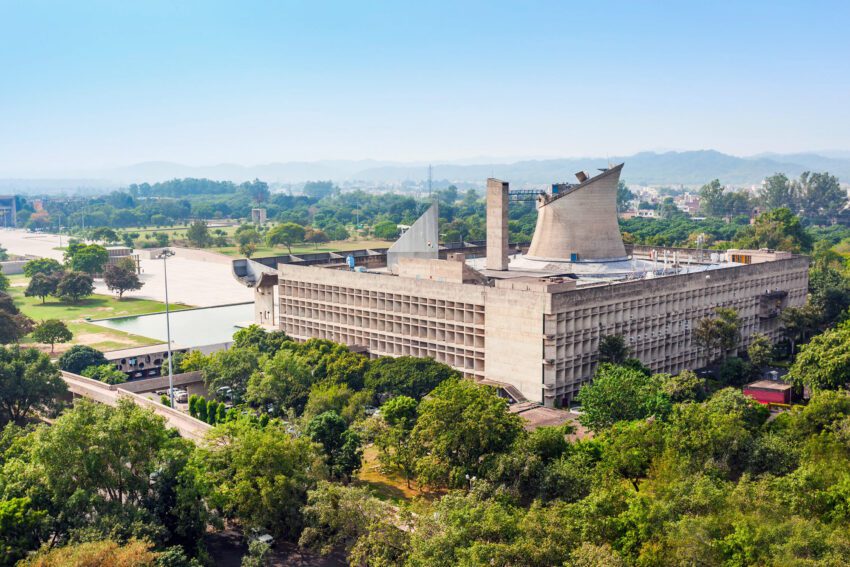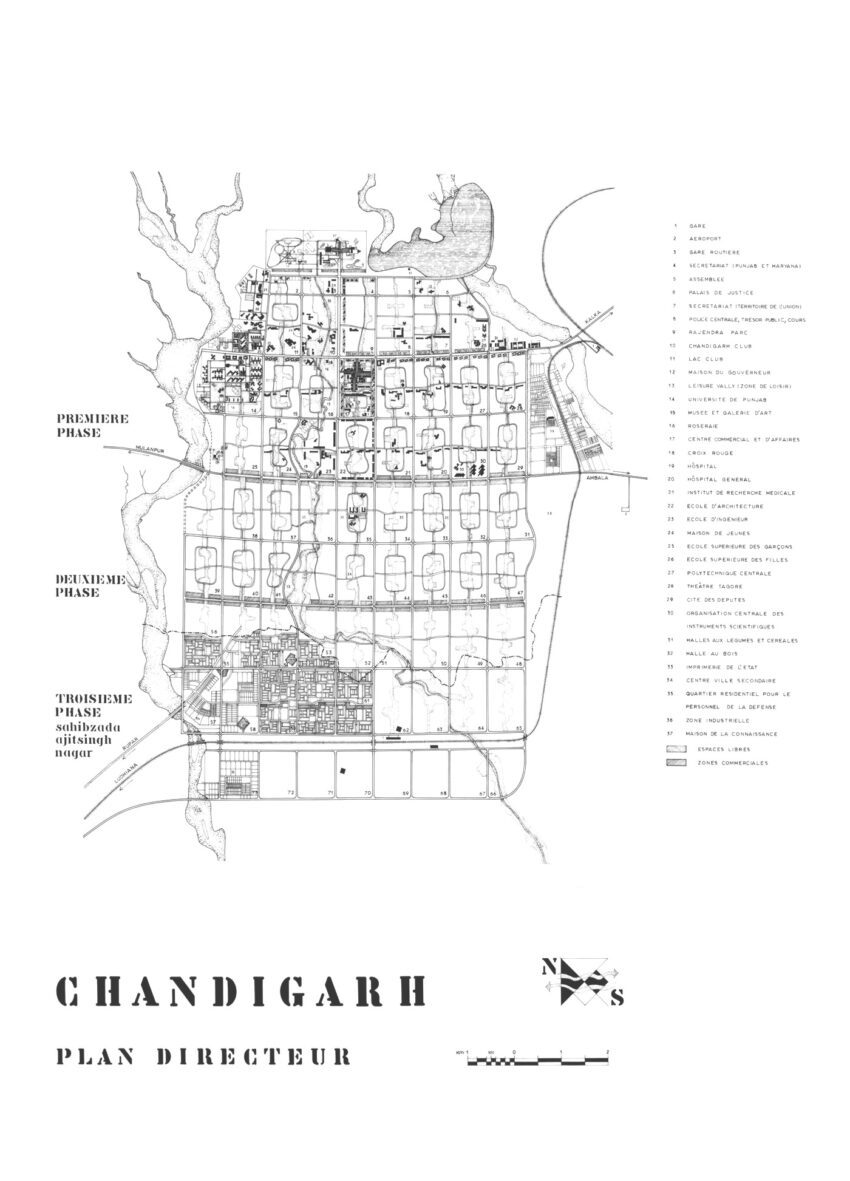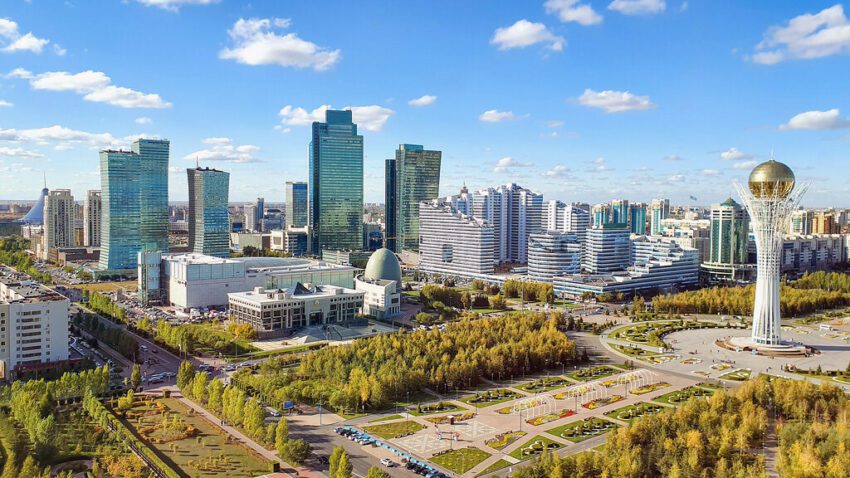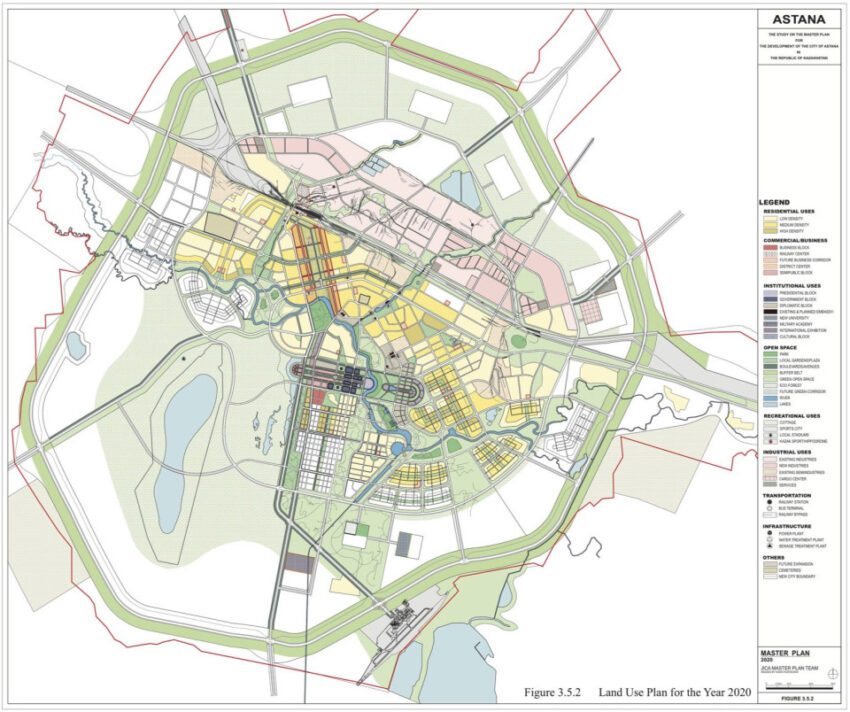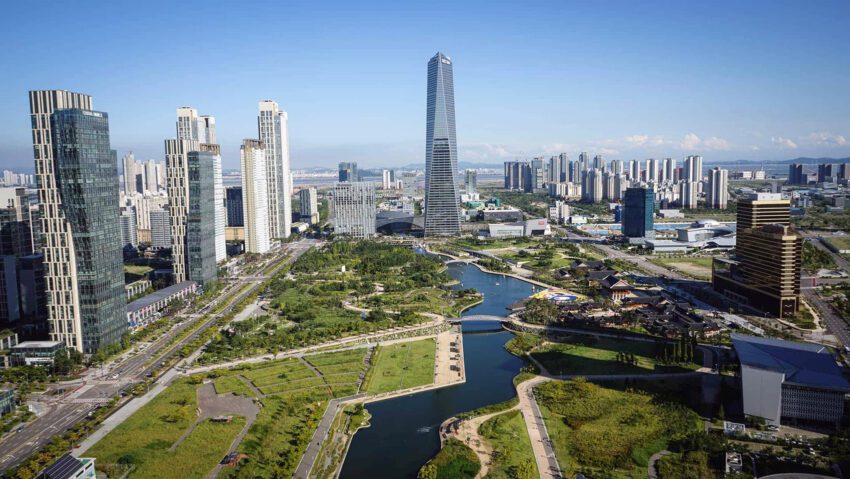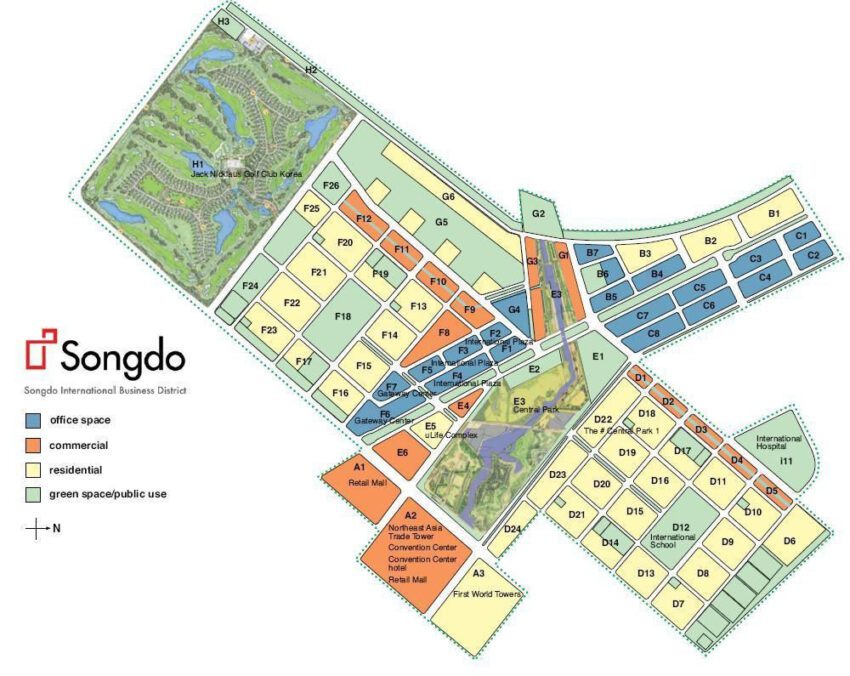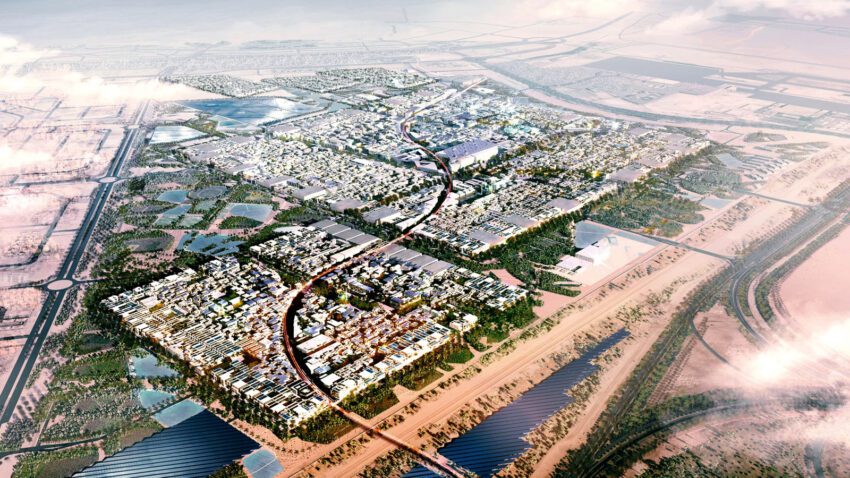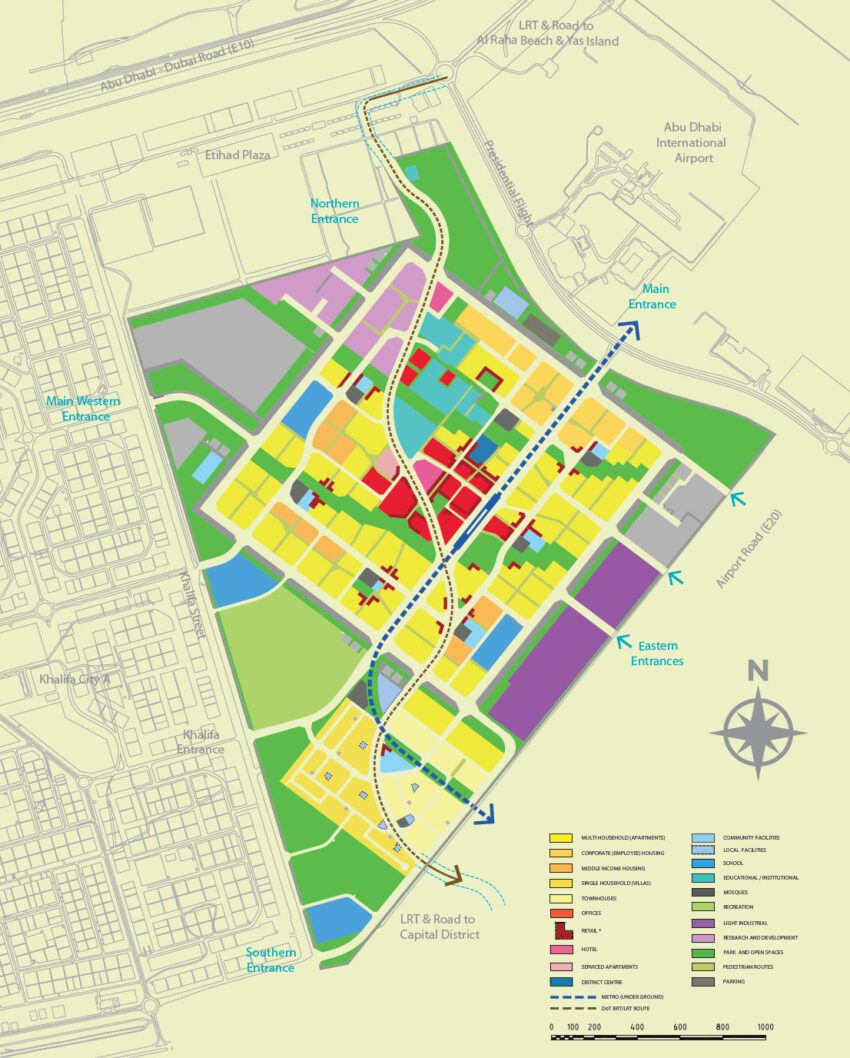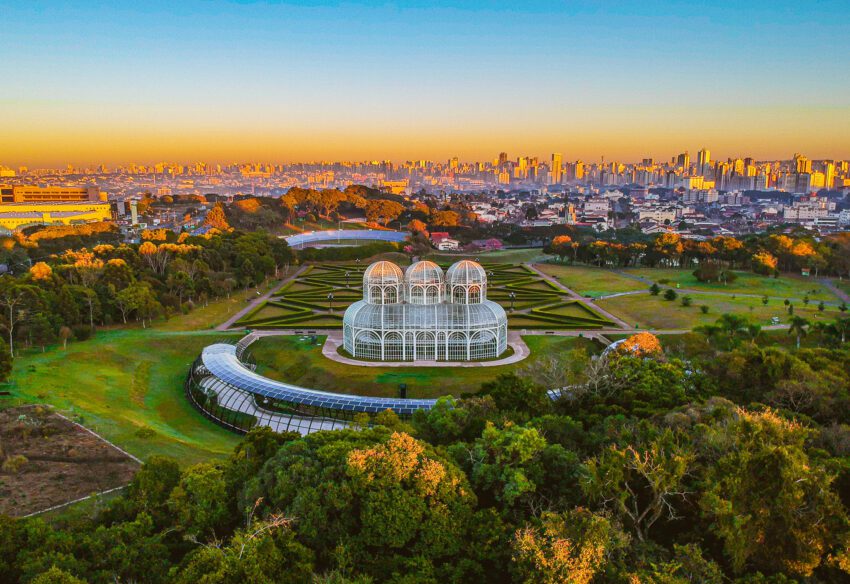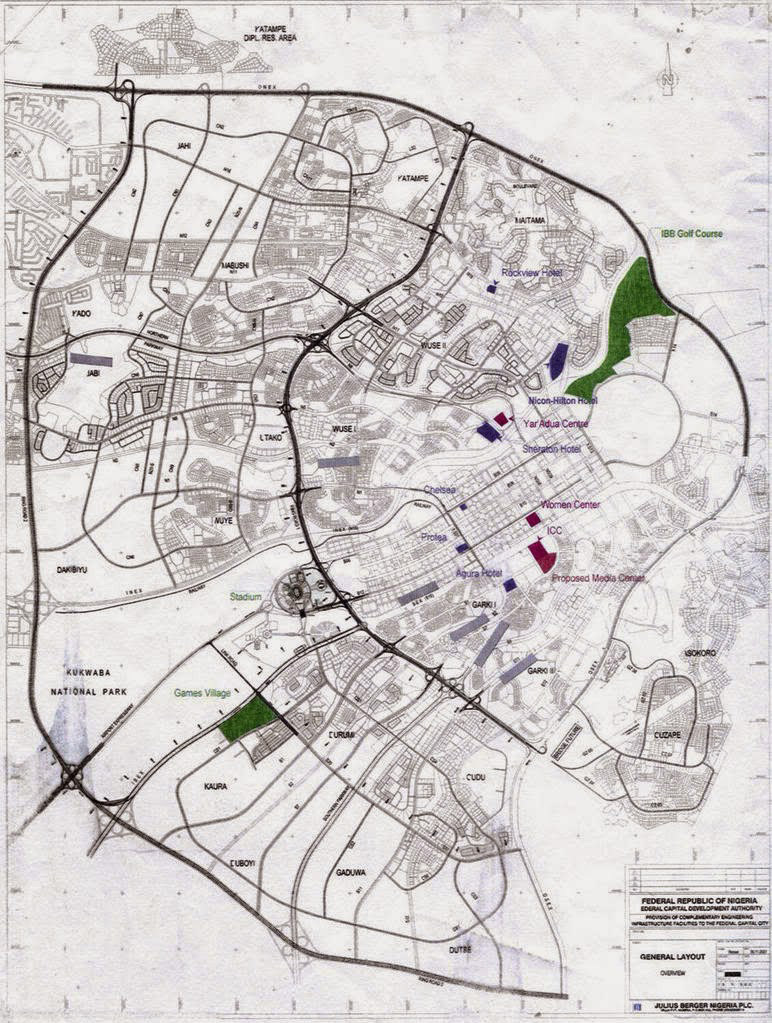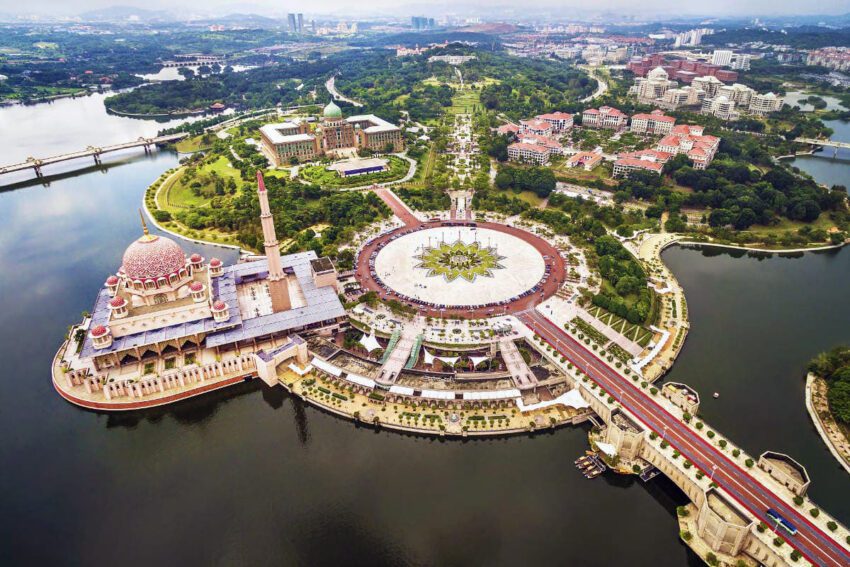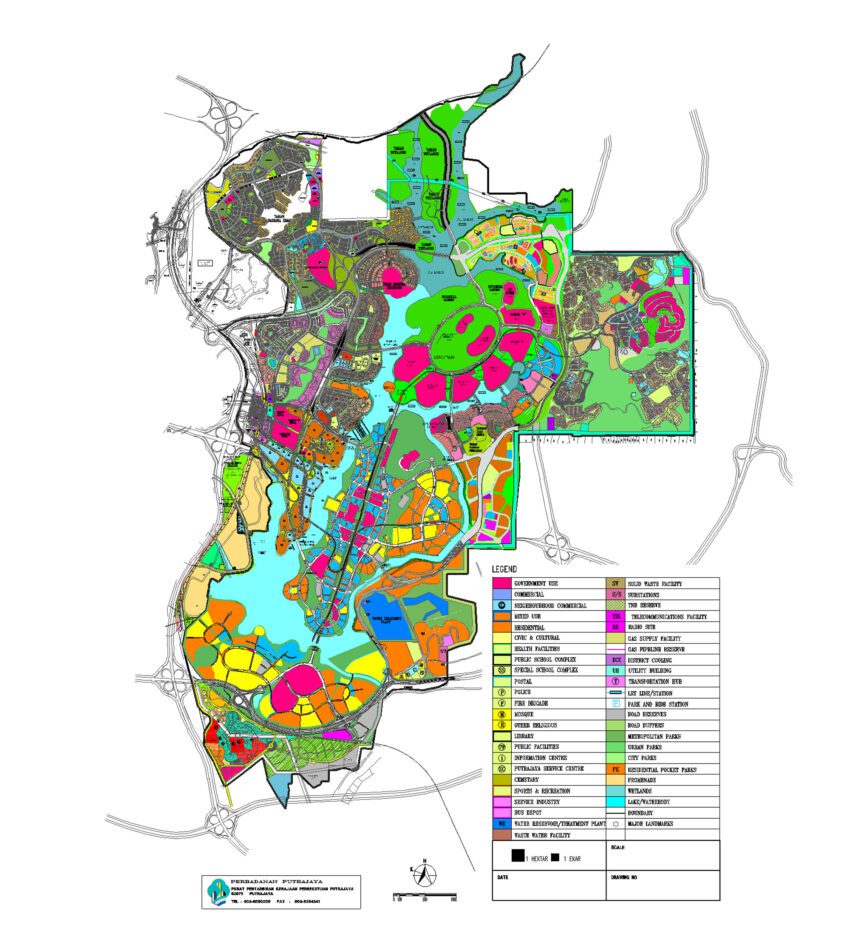Within the intricate tapestry of civilization, cities reflect our societal, cultural, and technological advancements. The past century, marked by rapid technological progress and shifting societal needs, has witnessed the emergence of new urban centers. These centers are designed from the ground up to embody specific visions of the future, serving as experiments in living. They attempt to answer complex questions about sustainability, quality of life, and innovation.
From cities built to address overpopulation and create economic opportunities to those designed to minimize environmental impact and embrace smart technologies, the last 100 years have offered many lessons on urban development.
This article explores the 10 best examples of such cities, delving into their founding principles, their challenges, the innovations they introduced, and their impact on the global discourse on sustainable urban living.
1. Brasília, Brazil – The Realization of a Dream
Founding Vision and Planning
Inaugurated in 1960, Brasília was born out of the vision of developing the interior of Brazil and shifting the population away from the coastal cities. Designed by Lúcio Costa and Oscar Niemeyer, it is a tribute to modernist architecture and urban planning. The town, resembling an airplane from above, was intended to optimize traffic flow and delineate distinct zones for government, residential, and commercial use.
Innovations and Impact
Brasília prioritized large open spaces, abundant greenery, and the integration of public buildings into the natural landscape. It challenged conventional urban sprawl by advocating a more organized and hierarchical urban structure. The city’s design has influenced urban planners worldwide, prompting discussions on the importance of scale, the role of government in city planning, and the impact of architectural vision on daily life.
Reflections
Despite its beauty and grandeur, Brasília has faced criticism for its lack of inclusivity and the practical challenges of navigating the city without a car. Yet, it remains a bold experiment in national identity, architectural innovation, and urban planning.
Brasília is not simply a city but an urban scale work of art.
– Oscar Niemeyer
2. Chandigarh, India – A Post-Colonial Utopia
Founding Vision and Planning
Chandigarh represents a pivotal moment in India, conceived shortly after gaining independence in 1947. The city was the brainchild of Prime Minister Jawaharlal Nehru, who envisioned it as a symbol of India and modernity. Designed by the French architect Le Corbusier, Chandigarh was conceived as an example of modernist design. It was intended to depart from the colonial architecture prevalent in India, embodying the aspirations of a newly independent nation.
Innovations and Impact
Le Corbusier’s plan for Chandigarh was revolutionary, based on his concept of the “Open Hand” — a symbol of peace and reconciliation. The city is divided into sectors, each designed to be self-sufficient, with shops, schools, and health facilities. Using geometric forms, broad avenues, and large green spaces was intended to promote a sense of order, cleanliness, and harmony among its inhabitants.
Chandigarh’s section combines functionality with aesthetic appeal, featuring monumental buildings like the High Court, the Secretariat, and the Assembly. These structures are significant for their architectural innovation and their symbolic representation of democratic values and the spirit of freedom.
Reflections
Today, Chandigarh is celebrated as one of the best-planned cities in India, renowned for its green spaces, urban design, and high quality of life. However, it also faces challenges typical of urban centers, such as population pressure and infrastructure demands. Despite these, Chandigarh remains a powerful example of how visionary urban planning and architecture can embody a nation’s ideals and aspirations.
I was able to build in Chandigarh something impossible to achieve anywhere else in the world.
– Le Corbusier
3. Astana, Kazakhstan – A Capital Steeped in Symbolism
Founding Vision and Planning
The transformation of Astana (renamed Nur-Sultan in 2019 in honor of the country’s first president, Nursultan Nazarbayev) from a modest town into the futuristic capital of Kazakhstan is a story of bold vision and ambitious planning. The decision to move the capital from Almaty to Astana in the late 1990s was driven by strategic, economic, and geopolitical considerations. President Nazarbayev envisioned the new capital as an example of Kazakhstan’s independence, growth, and aspirations on the global stage post-Soviet Union dissolution.
Innovations and Impact
The master plan for Astana (now known as Nur-Sultan), the capital of Kazakhstan, was primarily designed by the Japanese architect Kisho Kurokawa. Kurokawa’s design incorporated principles of metabolic architecture and symbiosis, aiming to create a modern, functional city that was adaptable to future changes and growth.
Astana’s skyline, characterized by its futuristic architecture, reflects Kazakhstan’s ambition to forge a unique identity and assert itself as a Central Asian player. The city’s master plan was designed to impress and showcase the nation’s wealth and optimism. Architectural landmarks such as the Bayterek Tower, the Palace of Peace and Reconciliation, and the Nur Astana Mosque are aesthetic triumphs and potent symbols of Kazakhstan’s post-Soviet identity, blending modernity with traditional motifs.
The Bayterek Tower embodies a tree of life holding a golden egg, drawing from a local myth. This and other structures like the Ak Orda Presidential Palace, with its pure white facade and blue and gold domes, echo Kazakhstan’s national colors and cultural heritage while signaling a forward-looking perspective.
Reflections
Astana’s development into a city of the future, replete with avant-garde buildings and an ambitious urban landscape, has not been without criticism, including concerns over costs and the stark contrast to Kazakhstan’s rural areas. However, the city is a testament to Kazakhstan’s desire to carve out a new narrative distinct from its Soviet past.
As a symbol of Kazakhstan’s post-Soviet identity, Astana (Nur-Sultan) embodies the country’s journey towards modernization and globalization. It marks its place on the world map through architectural marvels and urban planning that speak to its ambitions and dreams.
The philosophy of symbiosis allows us to blend with the environment, maintain our physical health, and create a more flexible architecture capable of handling changes.
– Kisho Kurokawa
4. Songdo, South Korea – The Smart City
Founding Vision and Planning
Songdo International Business District, part of the larger Incheon Free Economic Zone (IFEZ) in South Korea, was designed by the architectural firm Kohn Pedersen Fox (KPF) in collaboration with engineering, architecture, and planning firm Gale International and steel company POSCO E&C. This master-planned city is noted for its sustainable design, incorporating eco-friendly practices and smart technologies to create a “city of the future.” Conceived in the early 2000s, Songdo represents a bold step into the future of urban living, where technology is seamlessly integrated into everyday life to enhance efficiency, sustainability, and quality of life. This city was planned as a model for future urban centers worldwide, embodying South Korea’s vision of innovation and green living.
Innovations and Impact
Songdo’s infrastructure is an example of what is achievable when city planning incorporates digital technologies. It features a comprehensive pneumatic waste disposal system, eliminating the need for garbage trucks, and utilizes water recycling systems that significantly reduce waste. The city’s buildings use the latest sustainable materials and designs to minimize energy consumption and carbon footprint.
One of Songdo’s most notable aspects is its extensive use of information and communication technology (ICT). Everything is monitored and optimized through a central control system, from traffic management to energy use, making life in Songdo incredibly efficient. Residential and commercial buildings alike are equipped with the latest smart technologies, allowing residents to control various home appliances remotely and enjoy high-speed internet connectivity everywhere in the city.
The smart city concept extends beyond mere convenience, aiming to foster an environmentally conscious and economically vibrant community. Green spaces are abundant, and a 15-kilometer canal runs through the city, offering residents and visitors a place for recreation and relaxation amidst urban settings.
Reflections
Songdo, from a project on reclaimed land to a leading example of a smart city, highlights the potential of integrating digital technologies into urban planning. While it faces challenges, including achieving a full sense of community and vibrancy, Songdo is a pioneering model of how cities can adapt to the digital age, prioritize environmental sustainability, and improve residents’ lives.
5. Masdar City, UAE – Pioneering Sustainability
Founding Vision and Planning
Masdar City, initiated in 2006, is an ambitious project aiming to be one of the world’s sustainable urban communities. Located in the United Arab Emirates, it combines ancient Arabic architectural techniques with modern technology to achieve a low-carbon, low-waste ecosystem. Planned by the British architectural firm Foster + Partners, the city focuses on renewable energy, sustainable architecture, and superior quality of life.
Innovations and Impact
Central to Masdar City is its reliance on solar and other renewable energy sources, making it a global leader in clean technology. The city’s buildings are constructed with low-carbon materials and designed to minimize energy and water usage. Its transportation system includes electric vehicles and a network of shaded walkways to reduce the need for air conditioning.
Reflections
While Masdar City’s development has been slower than initially anticipated, its contribution to sustainable urban design and renewable energy research is unparalleled. It serves as a living laboratory for sustainable practices, offering valuable insights into the feasibility of carbon-neutral living.
6. Shenzhen, China – The Instant City
From a Fishing Village to a Mega-City
Shenzhen’s transformation is nothing short of miraculous. In the late 1970s, it was a modest fishing village, but with China’s economic reforms, Shenzhen was designated as the first Special Economic Zone (SEZ) in 1980. This pivotal decision marked the beginning of an unprecedented urban experiment, catapulting Shenzhen into a period of explosive growth that would make it a sprawling mega-city and a symbol of China’s rapid modernization.
Today, Shenzhen is at the forefront of China’s technological innovation and economic expansion. It is home to some of the world’s leading technology companies, including Huawei and Tencent, making it a global hub for electronics manufacturing and digital innovation. This city embodies the aspirations of China’s economic reforms, showcasing the country’s ability to leapfrog into the future of urban and economic development.
Evolving Urban Landscape
Shenzhen’s urban landscape exemplifies its dynamic growth and the evolving demands of its population and economy. The city’s architecture reflects its status as a crucible of innovation, with cutting-edge buildings and infrastructure projects designed to accommodate the needs of its tech-savvy inhabitants. Furthermore, Shenzhen is increasingly focusing on sustainability, with green spaces, eco-friendly buildings, and initiatives to reduce its environmental footprint.
Reflections
Shenzhen’s journey from a humble fishing village to a global mega-city is a compelling narrative of economic vision and urban planning. It illustrates the potential for rapid urban transformation underpinned by strategic policy decisions, investment in technology and infrastructure, and an openness to globalization. As Shenzhen continues to evolve, it remains a key player in shaping the future of urban living and a model for cities worldwide aiming to navigate the complexities of the 21st century.
7. Milton Keynes, UK – A Green City Vision
Concept and Development
In the late 1960s, Milton Keynes was designed as a radical departure from traditional British urban planning, aiming to solve the problems of urban sprawl and congestion experienced in London. Its development was underpinned by the vision of creating a “city in the forest,” offering the amenities and conveniences of urban life without sacrificing space and nature. The master plan for Milton Keynes included a distinctive grid road system inspired by North American urban layouts, which allowed for easy navigation and reduced traffic congestion within the city.
Grid Road System and Green Spaces
Central to Milton Keynes’ design is its grid road system, which segments the city into manageable districts, each with its own community services and green spaces. This grid system is complemented by an extensive network of footpaths and cycleways, separate from the main roads, encouraging walking and cycling as healthy, sustainable modes of transport. The city also boasts over 20 million trees and shrubs, with its parks and green spaces making up about 25% of the urban area, reflecting the city’s commitment to environmental sustainability and the well-being of its residents.
Milton Keynes represents a pioneering approach to modern urban planning, combining city life’s efficiency and vibrancy with the countryside’s tranquility and openness. Its design principles have influenced urban developments worldwide, offering insights into how cities can grow sustainably while prioritizing green spaces and community-centric layouts. Milton Keynes challenges conventional notions of urban living, showcasing how thoughtful planning can harmoniously blend urban convenience with nature’s beauty and therapeutic benefits.
Reflections
Today, Milton Keynes embodies a balance between urbanization and environmental preservation. It serves as a model for cities aiming to enhance their residents’ quality of life by integrating green spaces into the urban fabric. As cities worldwide grapple with the challenges of growth and sustainability, Milton Keynes offers valuable lessons in creating urban spaces that are both livable and green.
8. Curitiba, Brazil – The Ecological Capital
Jaime Lerner’s Urban Experiments
Under the visionary leadership of Jaime Lerner, the mayor in the 1970s, Curitiba transformed into a global model of urban sustainability. Lerner’s innovative approaches to urban planning resulted in a city that prioritized the environment and improved the quality of life for its residents. Central to these initiatives was integrating an efficient public transportation system designed to reduce traffic congestion and pollution.
Innovative Recycling Programs and Green Spaces
Curitiba is renowned for its recycling programs, which are among the most successful in the world. These programs significantly reduce waste and encourage environmental stewardship among its citizens. The city’s investment in green spaces is equally notable; parks and gardens are strategically located throughout Curitiba, serving as the city’s lungs. These green spaces enhance the urban landscape and play a crucial role in flood prevention, creating a sustainable and resilient urban environment.
Reflections
Curitiba exemplifies how targeted urban planning and community involvement can lead to sustainable city living. Its accomplishments in public transportation, waste management, and the creation of green spaces offer valuable lessons for cities worldwide striving to balance urban development with environmental preservation.
9. Abuja, Nigeria – The Center of Unity
Planning and Development
The decision to move Nigeria’s capital from Lagos to Abuja in the 1980s was driven by the need for a more centrally located capital to foster national unity and decentralization. From scratch, Abuja was envisioned as a “Center of Unity,” with its design and development reflecting Nigeria’s diverse cultural heritage and aspirations for a harmonious future.
Unique Location, Planning, and Challenges
Abuja’s unique location at the country’s center offers strategic advantages and symbolizes a fresh start away from the colonial past. The city’s planning incorporates spacious avenues, significant green areas, and monumental buildings to reflect the country’s identity and potential. However, Abuja faces challenges related to rapid urbanization, including infrastructure development, housing shortages, and maintaining the balance between growth and environmental preservation.
Reflections
As Abuja continues to grow, its role as a symbol of national unity and a model for planned urban development in Africa becomes increasingly significant. The city’s ongoing development highlights the complexities of building a capital as a political, cultural, and social hub for a diverse nation.
10. Putrajaya, Malaysia – The Administrative Capital
Creation and Purpose
In the 1990s, Malaysia embarked on an ambitious project to relieve congestion in Kuala Lumpur by establishing a new administrative capital, Putrajaya. Named after the first Malaysian Prime Minister, Tunku Abdul Rahman Putra, Putrajaya represents a modern vision for Malaysia, where governmental functions could be centralized in a meticulously planned urban setting.
Architectural Style and Governmental Role
Putrajaya is distinguished by its architectural style, which marries modern planning principles with traditional Malay-Islamic designs, creating a visually stunning and culturally significant urban landscape. The city is home to Malaysia’s federal government, with impressive structures such as the Putra Mosque and the Prime Minister’s office reflecting the blend of modernity and tradition that characterizes Malaysia’s approach to progress.
Reflections
Putrajaya exemplifies Malaysia’s commitment to creating a functional and beautiful administrative capital. Its development highlights the role of urban planning in national identity, governmental efficiency, and cultural preservation. As Putrajaya continues to evolve, it reinforces the idea that cities can be thoughtfully designed to meet specific needs while honoring cultural heritage.
Conclusion: A Century of Urban Innovation
Over the last century, creating new cities has illustrated a kaleidoscope of visions, strategies, and aspirations. From Brasília’s modernist experiment to Shenzhen’s rapid transformation into a technological hub, each city embodies a unique response to the challenges and opportunities of its time. The journey through these cities reveals not only the diversity of approaches to urban planning and design but also the common threads that bind them: the pursuit of sustainability, the integration of technology, and the constant striving for a better quality of life for their inhabitants.
These examples underscore the importance of visionary planning, adaptability, and the willingness to experiment and innovate. Cities like Curitiba have shown how environmental sustainability can be woven into the urban fabric, making it a cornerstone of city life rather than an afterthought. Songdo represents the possibilities of integrating digital technologies to create smarter, more efficient urban environments. Meanwhile, developing places like Putrajaya and Abuja reflect the ongoing quest for national identity and unity through deliberate city planning and architectural expression.
Reflecting on these cities, we see broader urban planning and architecture trends that resonate with global challenges. The push towards sustainability, the embrace of technology, and the focus on human-centric design are themes that will undoubtedly shape the future of urban development. As we look forward, the lessons learned from these cities offer valuable insights for the next generation of urban spaces. Future cities might draw on these experiences to address challenges such as climate change, resource scarcity, and the need for inclusive, resilient communities.
References and Further Reading
For those interested in exploring the intricate details of these cities and their impact on urban planning and architecture, the following resources provide a wealth of information:
- Cities for People by Jan Gehl
- The City of Tomorrow: Sensors, Networks, Hackers, and the Future of Urban Life by Carlo Ratti and Matthew Claudel
- Walkable City: How Downtown Can Save America, One Step at a Time by Jeff Speck
- Sustainable Urbanism: Urban Design With Nature by Douglas Farr
- The Death and Life of Great American Cities by Jane Jacobs
- Curitiba: The Ecological Capital by Jaime Lerner




